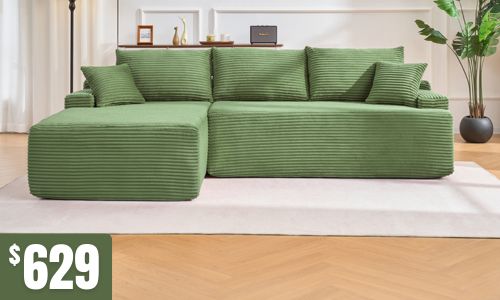Posts tagged with 'innovation'
 Furniture design is a fascinating realm where creativity intertwines with culture, resulting in pieces that reflect the traditions, aesthetics, and values of different societies. As we delve into the captivating world of global furniture design, we uncover how various cultures have left their indelible marks on the creation and evolution of functional art.
Furniture design is a fascinating realm where creativity intertwines with culture, resulting in pieces that reflect the traditions, aesthetics, and values of different societies. As we delve into the captivating world of global furniture design, we uncover how various cultures have left their indelible marks on the creation and evolution of functional art.
The Fusion of Function and Culture
Furniture has transcended its utilitarian roots to become a form of artistic expression that communicates cultural nuances. Each piece holds a narrative, weaving together historical, social, and aesthetic threads. Whether it's the ornate wooden carvings of Indian furniture or the minimalistic elegance of Scandinavian design, every culture imparts its unique flair to the art of furniture making.
A Journey Through Cultures
- Japanese Zen Aesthetics: Simplicity and Tranquility
Japanese furniture design is synonymous with simplicity, minimalism, and harmony. The concept of Zen permeates through every piece, where clean lines, natural materials, and uncluttered spaces create an atmosphere of tranquility. The tatami mat, the low-slung platform bed, and the shoji screen are emblematic examples of how Japanese culture has shaped furniture design.
- Scandinavian Chic: Functionality and Elegance
Scandinavian design marries functionality with timeless elegance. Influenced by the stark landscapes and long winters, Scandinavian furniture emphasizes light, warmth, and comfort. The iconic designs of Arne Jacobsen, Alvar Aalto, and Hans Wegner showcase the region's penchant for organic forms, natural materials, and ergonomic craftsmanship.
- Moroccan Opulence: Intricacy and Luxury
Moroccan furniture design is a celebration of opulence and intricate detailing. Rich colors, ornate patterns, and elaborate carvings characterize this style. The use of luxurious textiles like silk and velvet, as well as the incorporation of traditional motifs, speaks to the country's history of trade and cultural exchange.
- Mid-Century Modernism: Form and Function United
Mid-century modernism emerged as a response to the post-war era, embodying a spirit of optimism and innovation. Influenced by Bauhaus principles, this style prioritizes clean lines, organic shapes, and a seamless integration of form and function. Designers like Charles and Ray Eames, Eero Saarinen, and Le Corbusier created iconic pieces that still define modern interiors today.
- Indian Craftsmanship: Heritage and Diversity
Indian furniture design is a testament to the country's rich cultural tapestry and artisanal heritage. Intricately carved woodwork, vibrant textiles, and symbolic motifs are key features of Indian furniture. From the ornate royal thrones to the rustic charpoys, each piece reflects the diverse traditions and artistic sensibilities of different regions in India.
The Global Exchange of Ideas
In today's interconnected world, furniture design is no longer confined by geographical boundaries. Cultural influences are continually intertwining and evolving, leading to a fusion of styles that is both exciting and innovative. Globalization has facilitated the exchange of ideas, enabling designers to draw inspiration from multiple cultures and create truly unique pieces that transcend conventional definitions.
Check our wide range of furniture style selections for your next home upgrade!
 In today's fast-paced and competitive business world, fostering creativity and innovation is crucial for companies to stay ahead. One often overlooked aspect of creating an environment that promotes creativity and innovation is office furniture. The right furniture can have a significant impact on the overall design and functionality of an office space, leading to improved productivity and inspiring ideas. In this article, we will explore the role of furniture in designing office spaces that stimulate creativity and innovation.
In today's fast-paced and competitive business world, fostering creativity and innovation is crucial for companies to stay ahead. One often overlooked aspect of creating an environment that promotes creativity and innovation is office furniture. The right furniture can have a significant impact on the overall design and functionality of an office space, leading to improved productivity and inspiring ideas. In this article, we will explore the role of furniture in designing office spaces that stimulate creativity and innovation.
How does office furniture affect creativity and innovation?
Office furniture plays a vital role in shaping the physical environment and can greatly influence the mindset and behavior of employees.
Here's how it impacts creativity and innovation:
- Ergonomics: Ergonomically designed furniture ensures employees are comfortable and can focus on their work without distractions or discomfort. Properly aligned chairs, adjustable desks, and supportive seating promote better posture, reduce physical strain, and improve overall well-being, enabling individuals to think more clearly and creatively.
- Flexibility and adaptability: Furniture that allows for easy reconfiguration and adaptability promotes collaboration and creative thinking. Modular workstations, movable partitions, and flexible seating options encourage spontaneous discussions, brainstorming sessions, and cross-functional collaboration.
- Aesthetics and inspiration: Well-designed and visually appealing furniture can create a stimulating environment that inspires creativity. Incorporating elements of color, texture, and unique designs can enhance the aesthetic appeal of the workspace and evoke positive emotions, leading to more innovative thinking.
What are some furniture features that support creativity and innovation?
To foster creativity and innovation, office furniture should possess certain features that support a dynamic and collaborative work environment.
Here are some essential features to consider:
- Collaboration zones: Furniture arrangements that facilitate team collaboration, such as modular desks, comfortable lounge seating, and shared workstations, encourage open communication and idea exchange among employees.
- Standing desks: Adjustable standing desks promote movement and allow employees to switch between sitting and standing positions. This not only improves physical health but also stimulates creativity by providing a change in perspective and posture.
- Privacy options: While collaboration is important, employees also need privacy when working on focused tasks or brainstorming individually. Furniture solutions like privacy screens, soundproof pods, or individual workstations with adjustable dividers offer the necessary privacy without isolating employees entirely.
- Storage solutions: Clutter can impede creativity. Ample storage options, such as filing cabinets, shelves, and organisational units, help keep the workspace tidy and minimise distractions, enabling employees to stay focused and generate innovative ideas.
How can furniture layout contribute to creativity and innovation?
The layout and arrangement of furniture within an office space can significantly impact creativity and innovation.
Consider the following aspects:
- Open plan design: An open layout promotes transparency, communication, and collaboration. By removing physical barriers and encouraging free movement, employees are more likely to interact, share ideas, and innovate.
- Zones for different activities: Creating designated areas for specific activities, such as brainstorming zones, quiet zones for focused work, and relaxation areas, allows employees to choose spaces that best suit their needs at different stages of the creative process.
- Natural light and views: Positioning furniture to maximize natural light and provide access to outdoor views has a positive impact on creativity. Sunlight and nature views help reduce stress, enhance mood, and boost cognitive performance.
Designing office spaces for creativity and innovation goes beyond aesthetics and functional considerations; it includes the strategic selection of furniture. The right furniture can contribute to a positive work environment, stimulate creativity, and foster innovation among employees. By prioritising ergonomic design, flexibility, collaboration, and technology integration, companies can create an inspiring workspace that nurtures the creative potential of their teams. Ultimately, investing in well-designed office furniture is an investment in the future success and growth of an organisation.
Check our office furniture for your next creativity upgrade!




.jpeg)

 (3).jpeg)
